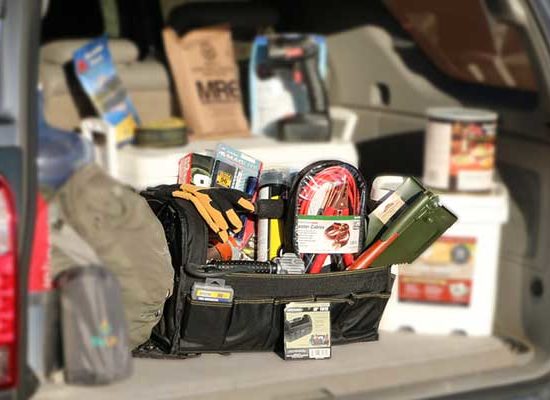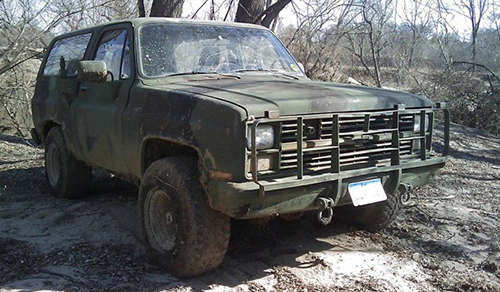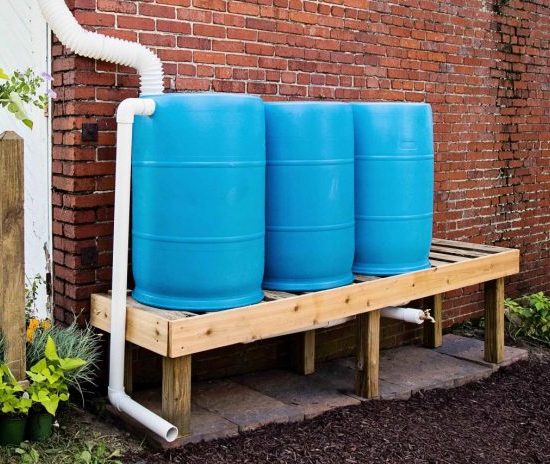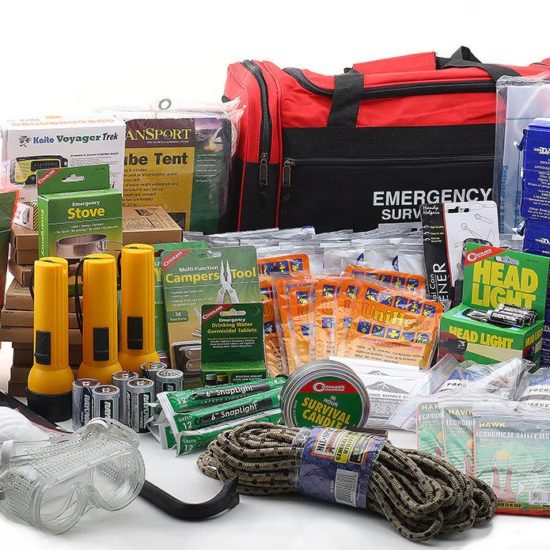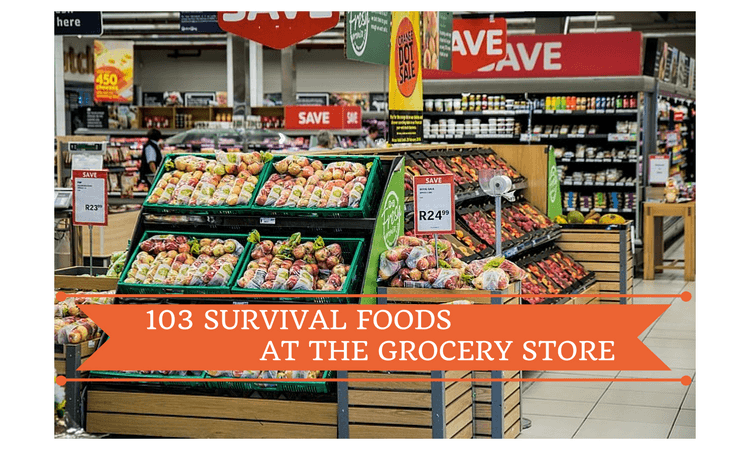
Although you may not know of any immediate dangers or emergencies, it is best to be prepared for something long before it presents itself. Often, when a disaster arrives, supermarkets will run out of food rapidly. In fact, typically grocery stores only have a maximum of three days of goods on hand before they run out, so it would be best to prepare now.
Below are 103 items a prepper should consider to have on your long term food storage list because they have a long-shelf life, have multiples uses and can be great for bartering. and should pick up during your next grocery store visit to hold in case of emergency:
How do we choose them?
Shelf Life.
When the world is not the same as we knew it now. Chances are there will be no one restocking the food at the nearby Walmart. One of the best bet is to store only food that can last for decent amount of time.
Bartering
Unlike in video games, cash does little but to use as artificial fuel to keep your campfire burning (not that it is of much use in that aspect as well). Ensuring that you have items on hand that are essential for survival will also mean that you have bargaining chips in negotiations as well.
Multi-Purpose
Food are not only used to nourish our bodies. Some food even rises up to special occastions when you couldn’t find any such as cleaning or antibiotics.
1. Back To Basics
These ingredients are those that should be on any survival food list because they are foods that are the foundation of many meals. That being said, many can be eaten alone if need be.
Grains
As you are likely aware, grain are a stable in many people’s diets and are crucial to have available during a disaster. They offer a viable way to keep you filled when looking for alternatives.
Depending on the aridity and coolness of where these are stored; the shelf life can vary.
Hard Grains
When stored properly at 70 degrees F, these grains can last for 10 – 12 years. They can be stored longer due to their hard outer shells.
Hard Grains
1. Buckwheat
2. Dry Corn
3. Kamut
4. Hard Red Wheat
5. Soft White Wheat
6. Millet
7. Duram Wheat
8. Spelt Or Hulled Wheat
1. Buckwheat
Buckwheat is usually considered as an alternative to rice. Low in GI and filling. It is a worthy choice to store
2. Dry Corn
Lesser known as Maize, these corns is a good source of vitamins B, fibers and essential minerals for the human body.
3. Kamut
High in protein and minerals compared to modern wheat.
4. Hard Red Wheat
Brownish , high protein wheat
5. Soft White Wheat
Made from red wheat, these grains contained lower protein but higher carbohydrates.
6. Millet
Great for the heart and can be stored for a long time.
7. Durum wheat
Durum wheat is a very hard wheat with high proteins
8. Spelt or Hulled Wheat
Triticum spelta, the scientific name of Spelt is a more nutritious counterpart to wheat; containing more carbohydrates and fiber.
Soft Grains
In contrast to the Hard Grains, these have a softer outer shell; hence the name. If stored properly at 70 degrees F, soft grains can last for about eight years.
Soft Grains
1. Barley
2. Oats Groats or Hulled Oats
3. Quinoa
3. Rye
5.Rolled Oats or Oatmeal
1. Barley
Chewy and having a nutlike flavor, barley contains maltose which are essential for the human body.
2. Oat Groats Or Hulled Oats
Oat Groats are the kernals of Oats. They can take a long time to cook. It is an excellent source of Fiber, vitamin B and Protein.
3. Quinoa
Highly nutritious. Quinoas are gluten-free and one of the few plant food that contain all 9 essential amino acids
4. Rye
Contain lower gluten and higher fiber than wheat
5. Rolled Oats or Oatmeal
Another preparation method of the Oats. Think Quakers.
2. Beans And Peas
Fact Check: Most beans are in fact, seeds that we can use as food.
Beans are a great source of protein, fiber, iron and should definitely be on your food prepper list. They must be sealed and kept away from oxygen.
The beans below can last for up to 10 years.
Beans And Peas
1. Pinto Beans
2. Kidney Beans
3. Lima Beans
4. Hard Red Wheat
5. Adzukzi Beans
6. Green Mung Beans
7 Black Turtle Beans
8. Blackeye Beans
9. Dried Lentils
10. Dried Beans
10. Dried Split Peas
1. Pinto Beans
Very High in Dietary Fiber and Proteins and usually consumed in US
2. Kidney Beans
High in Iron and Potassium and various vitamins. Essentially a good choice to store for various disasters.
3. Lima Beans
Also called butter beans for their buttery texture. They are good sources of Fiber vitamin B
4. Adzukzi Beans
Native to East Asia, also known as red mung beans. High in Fiber and good for the heart.
5. Garbanzo Beans
Also known as Chickpeas.
6. Green Mung Beans
The green cousin to the Adzukzi Beans.
7. Black Turtle Beans
Low Gl, high in fiber, protein and Iron. What’s more?
8. Blackeye Beans
Literally having a black eye. These beans are high in Potassium; have good Iron and protein
9. Dried Lentils
Coming from Asia and North Africa. It is one of the oldest sources of food and a rich provider of protein and carbohydrates.
10. Dried Beans
Also known as legumes or pulses, these dried beans are one of the world’s oldest food source. They are also excellent sources of protein, dietary fiber and complex carbohydrates
11. Dried Split Peas
Dried Peas are available around the year, making it a good choice to store whenever you need to at the mart.
3. Get Some Doughs
Flours, mixes and pasta can last anywhere from five to eight years if stored properly.
Get Some Doughs
1. All Purpose Flour
2. White Flour
3. Whole Wheat Flour
4. Cornmeal
5. Pasta
6. White Rice
7. Noodles
4. Some Sweet Stuff
If frozen, dried fruits are nonperishable and still last for a long time if left out in the open. See below for some options.
Some Sweet Stuff
1. Raisins
2. Dried Cranberries
3. Dried Blueberries
4. Dates
5. Dried Mangoes
6. Apricots
7. Dried Cherries
8. Dried Plums
9. Banana Chips
5. The Morale Boosters
While it may seem unnecessary to focus on adding flavor or cooking well during a time of emergency, if you have time to prepare in advance, investing in spices and ingredients that add flavor to your food is well worth it.
Flavoring your food during a tough time can help to raise morale during a tough time. Spices can often last over ten years or forever if stored properly.
The Morale Boosters
1. Salt
2. Peppers
3. Brown Sugar
4. White Sugar
5. Raw Honey
6. Whiskey
7. Vodka
8. Molasses
9. Maple Syrup
10. Cinnamon
11. Paprika
12. Dried Herbs
13. Pure Flavor Extracts
6. Oils
Most types of oils aren’t going to last long enough to hold onto for long term disasters,but there is one that will at least for a couple years!
Oils
1. Coconut Oil
7. Condiments

There aren’t a ton of non perishable condiments, but there are a few if you are hoping to add them to your survival food list.
Condiments
1. White Vinegar
2. Apple Cider Vinegar
3. Balsamic Vinegar
4. Rice Wine Vinegar
5. Red Wine Vinegar
6. Raspberry Vinegar
7. Worcestershire Sauce
8. Other
If you plan on cooking, the below items would be useful to have on your long term food storage list.
Other Useful Items
1. Corn Starch
2. Baking Soda
3. Corn Syrup
9. Items Used For More Than Cooking
While the below items have already been listed, it is important to call special attention to them because even if you don’t think you would need them for your food prep, you may need them for another use.
1. Apple Cider Vinegar for its cooking, cleaning and as antibiotic properties
2. Baking Soda for cooking and cleaning functions
3. Honey for it’s antibiotic wound properties. It also alleviates allergies, treats burns and acts a sleep aid.
10. Short Term Survival Foods

Other survival foods that you should have on your food prepper list are below, but they are better for short term disasters because of their shorter shelf life.
It’s fair to assume that during a short term disaster you won’t be able to or won’t want to do any food preparation or cooking and the below foods are perfect for that. Make sure to pick them up during your next trip to the grocery store.
For The Short Haul
1. Canned Tuna
2. Canned Meats
3. Canned Vegetables
4. Canned Fruits
5. Peanut Butter
6. Coffee
7. Corn Oil
8. Cocoa Powder
9. Tea
10. Ramen Noodles
11. Hard Candy
12. Powdered Milk
13. Dried Herbs And Spice
14. Popcorn
15. Vegetable Oil
16. Oats
17. Cereals
18. Pasta Sauce
19. Crackers
20. Jell-O Or Pudding Mix
21. Instant Potato Flakes
22. Olive Oil
23. Bouillon Cubes or Granules
11. That Something Extra
In order to survive any sort of disaster you must also be prepared with the appropriate non-food items. Add the below items to your long term food storage list.
That Something X’tra
1. Bic Lighters
2. Toilet Paper
3. Soaps
4. Bottled Water
5. Vitamins
6. Charcoal
7. Batteries
8. Medicines
9. Bandages
10. Peroxide
11. Lighter Fluid
12. Canning Supplies
13. Flashlight
Conclusion
You certainly do not need to buy every item on the survival food list to be prepared for a short or long term disaster, but I would suggest getting a few items from each category.
Speak with your family about what items they would like most and then narrow down your list. Be certain not to forget water in addition to your food items.
Once you’ve made up your mind, don’t delay, head to the grocery store immediately or order any supplies you may need before disaster strikes and the stores become empty.
Before we end this off, here is an useful video on how to increase your odds of surviving.
Do you have any additions to this best prepper food list? If so, let us know!
This article has been written by Colin, from Basisgear.com


















